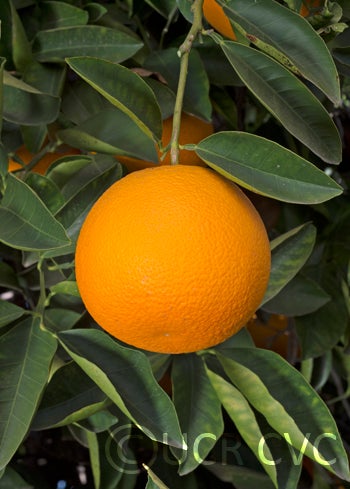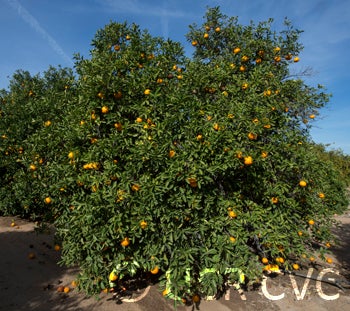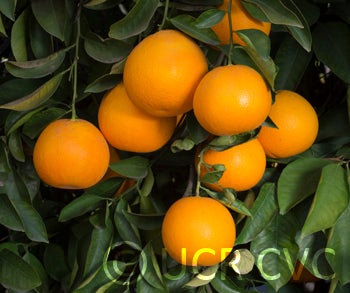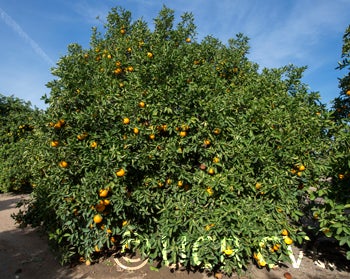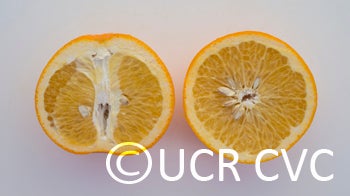Citrus hassaku hort. ex Tanaka RUTACEAE
CRC 3907
PI 539199
VI 434 (No longer available)
Source
Received as budwood from Japan, 1983.
Parentage/origins
Parents unknown.
Rootstocks of accession
Carrizo citrange
Season of ripeness at Riverside
October to November
Notes and observations
Had thermotherapy to remove psorosis and tristeza. Large fruit; 20-30 seeds; thick peel; tastes like grapefruit; not juicy; thick segment membrane.
Description from The Citrus Industry Vol. 1 (1967)
"Fruit medium-large (9-10 cm in diameter), slightly oblate; both ends somewhat depressed; seedy and monoembryonic. Rind color orange-yellow; medium-thick; surface somewhat coarsely pebbled; moderately adherent. Segments numerous; axis large and semi-hollow at maturity. Flesh color light yellow; somewhat coarse-grained; lacking in juice; flavor good. Early midseason in maturity and stores only moderately well.
Tree vigorous, upright, virtually thornless; leaves large and pummelo-like, but petiole wings narrower, approaching sweet orange.
Hassaku is said to have originated as a chance seedling in Hiroshma Prefecture, Japan. It was noted and named in 1860, but was not propagated and planted commercially until about 1925. In 1964, Japanese planting was reportedly in excess of 2,500 acres, mostly in the prefecture of its origin. During the 1960's, however, it has been planted increasingly elsewhere.
Its characteristic strongly suggest pummelo-mandarin parentage with pummelo predominant."
Availability
No longer commercially available in California. This accession no longer has an approved budsource. Please refer to the CCPP for information on another approved budsource or to start a reintroduction inquiry.
USDA Germplasm Resources Information Network page for Beni Hassaku pummelo hybrid
